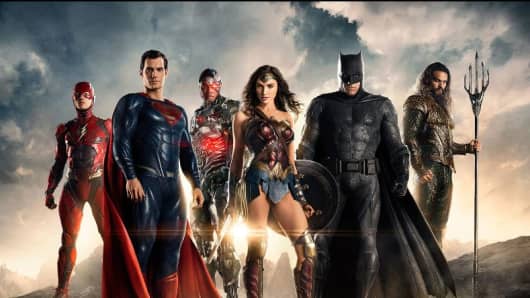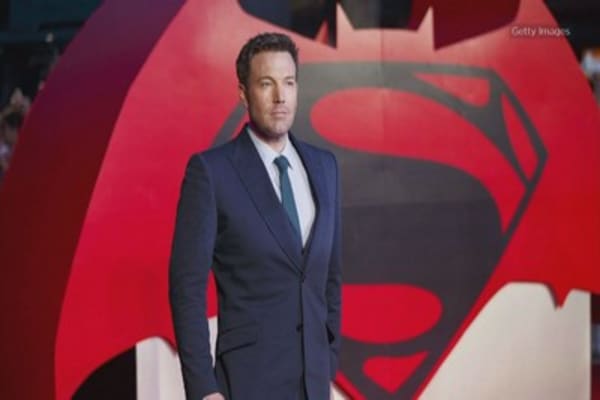Thor: Ragnarok Finally Solves Marvel’s Biggest Plothole
You know the Infinity Gauntlet? That big glove in the Marvel Cinematic Universe specifically designed to hold all six infinity stones and turn the wearer into basically a God? Well, eagle eyed Marvel fans have been confused by something about it for a while now and Thor: Ragnarok finally clears all that up.

Odin’s Vault (Thor, 2011).
We first saw the Infinity Gauntlet in the background of Odin’s Trophy Room in the first Thor film when The Destroyer was popping off against the Frost Giants. Notice this one is a right handed gauntlet. Why is this important? Well, the next time we see the gauntlet in the MCU was in the Avengers: Age of Ultron mid credits scene.

Thanos puts on his gauntlet (Avengers: Age of Ultron, 2015).
In that scene we saw chirpy purple fella Thanos reach into a vault and put on the Infinity Gauntlet. Thanos is going to be a big deal in the upcoming Avengers: Infinity War films because he’s really into Infinity Stones. So, in this scene we see that Thanos already has an Infinity Gauntlet BUT how can that be when we saw the Infinity Gauntlet in Odin’s Trophy Room?
Marvel’s Kevin Feige had previously said that were two Infinity Gauntlets in the MCU but didn’t say why.

Cate Blanchett as Hela (Thor: Ragnarok, 2017).
Fast forward to Thor: Ragnarok and we see Hela strutting around Odin’s Trophy Room and revealing that a lot of the trophies are actually fake – especially the Infinity Gauntlet which she knocks over. This probably explains why it has replica Infinity Stones inside of it and why it’s a right handed glove when we see Thanos picking up a left handed glove.
Way back when they were making the first Thor, Marvel probably couldn’t have known that this little easter egg would end up being a bit of an annoying plot hole but now that’s all been cleared up so you can stop writing to Kevin Feige about it.
10 Nintendo Innovations That Flopped
Nintendo is about to release its latest console, the Switch$299.99 at Amazon. It’s unlike anything we’ve seen before—a hybrid portable and home machine that can be docked to a TV to play on the big screen or clipped into controllers to enjoy on the go. The initial software lineup is quirky, the hardware design is unique, and there’s a solid amount of hype for release day.
Here’s the rub, though: when Nintendo innovates, things don’t always go well. While we’re always supportive of companies trying to break out of the mold and do it differently, people don’t really love the big N for pushing the envelope. They love the familiar characters and adventures they grew up with.
So what’s driven Nintendo to be so relentlessly experimental? It’s hard to say. The surprise success of the Wii might be one reason, as well as a corporate philosophy that has long prioritized low cost and low-powered hardware over the latest and greatest. Sometimes that pays off, but sometimes it doesn’t. Here are 10 times Nintendo stepped outside of the box and paid the price.
The 5 Best Video Game Prologues
Games are the same way. Some games just start off strong. They paint the perfect picture of the adventure ahead, while luring you in with the right kind of visual and narrative hooks. They set their grand stories up in unique and fascinating ways that, often times, outshine the rest of the game. These are 5 of the best prologues in games.
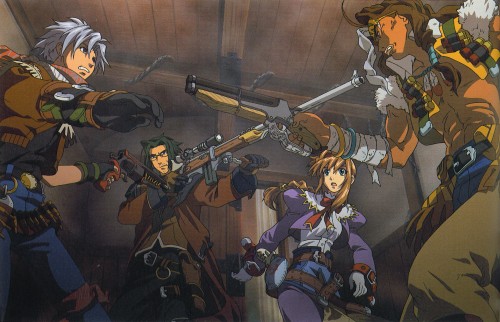
5. Wild ARMs 3
The Wild ARMs series has a bit of a pattern for its prologues. The beginning of each game is spent being introduced to the party of characters individually and watching the turn of events that unite them as a group for the first time. It’s fairly formulaic, but an easy to follow and reliable way to tell a good story. Wild ARMs 3 did this the best.
The four main characters – Clive, Gallows, Jet, and Virginia – all come from different corners of the dusty, decaying world of Filgaia. They all end up on a train for different reasons. Virginia and Gallows are simple passengers, Clive is hired to protect its mysterious cargo, and Jet looks to rob it. Another group of bandits stick the train up, and once they learn that its cargo isn’t simply money and valuables, the four band together to retrieve it and eventually save the world.
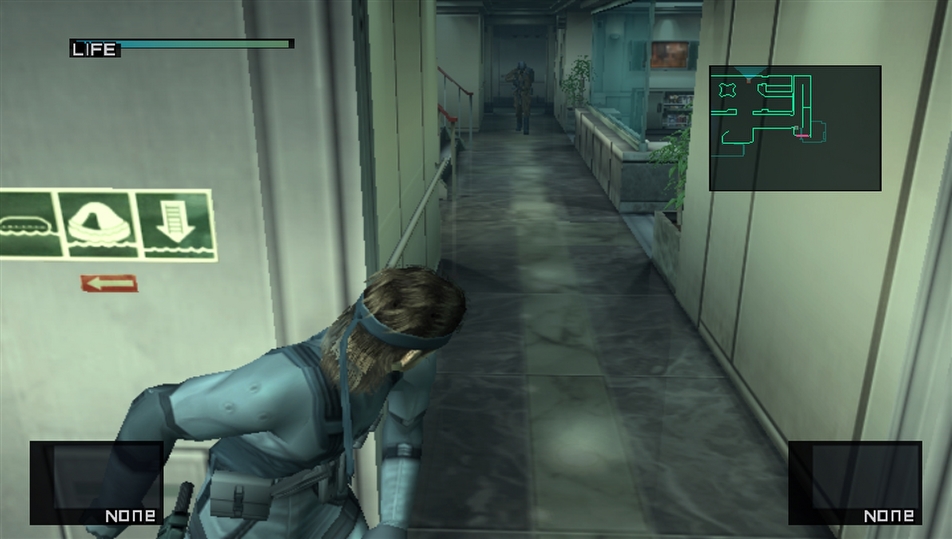
4. Metal Gear Solid 2: Sons of Liberty
The demo for Metal Gear Solid 2 is one of the most memorable demos of all time. There was a great deal of replayability and it was a chock full of stealth action goodness. It also served as a half hour prologue to the Big Shell Incident and the only time you play Solid Snake in the title – a twist no one knew about until the game finally hit shelves.
When infiltrating a giant oil tanker in the Hudson River to check for signs of general nefarity, you get exactly what you were looking for: A giant, aquatic Metal Gear seemingly funded by the USMC. While exploring the tanker, you realize that it is also under attack by Russians, lead in part by Ocelot, who turns on his other conspirators promptly. He steals the Metal Gear himself and leaves the ship to sink in the river. Big Shell is built 2 years later to clean up the mess and cover for even bigger evil master plans.
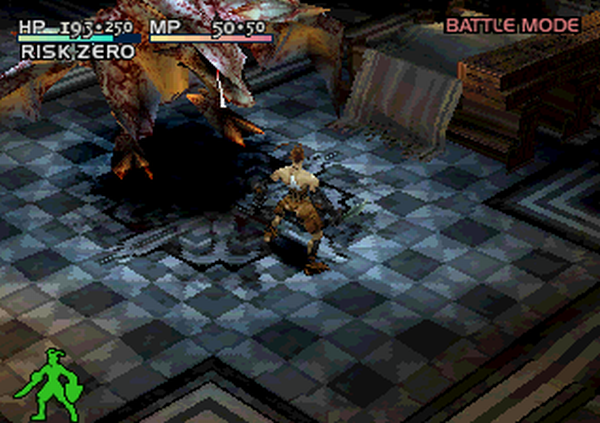
3. Vagrant Story
This RPG was one of the last made by the old Squaresoft (before becoming Square Enix) and is often overlooked because of how late in the Playstation’s lifecycle it released. To miss this game is to deprive yourself of one of the best RPGs of the era. It had a highly Shakespearean script and a fast, film-inspired cinematography that is an early victory in the quest for making games more like movies.
Its prologue is short and completely skippable, but it’s not wise to ignore it. Important story details, like why protagonist Ashley Riot is on his mission in the first place, are revealed in it. After the Duke’s mansion is attacked, the VKP are one of the many agencies called to the scene to stop the madness. The Duke’s son is kidnapped by Sydney Losstarot, cult leader and terrorist, and your job is to chase him down and get the child back. Not so easy, since the villain leaves a giant wyvern behind to keep you busy.
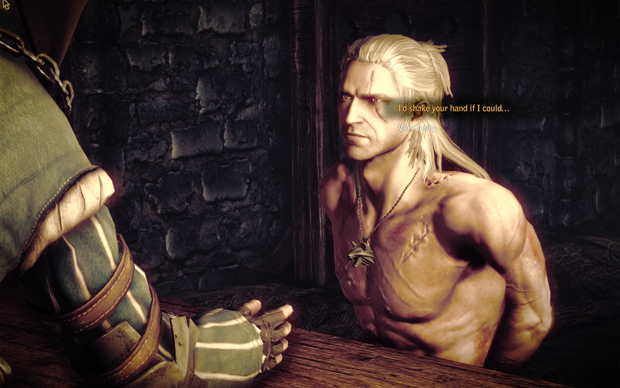
2. The Witcher 2: Assassins of Kings
Geralt’s adventures have brought put him into pretty tight spots before, but the beginning of the Witcher 2 might have been the closest he’s come of outright death by political agendas and being in the wrong place at the wrong time.
You begin the game imprisoned, being interrogated by Vernon Roache about their king’s last moments, ones he had in Geralt’s company. As told in a set of flashbacks, the story of King Foltest’s death and the moments leading up to it are told with with a great deal of murder mystery TV show flair. An uncommon trope to call on for a fantasy game, but one that makes this opening stand out above many others.
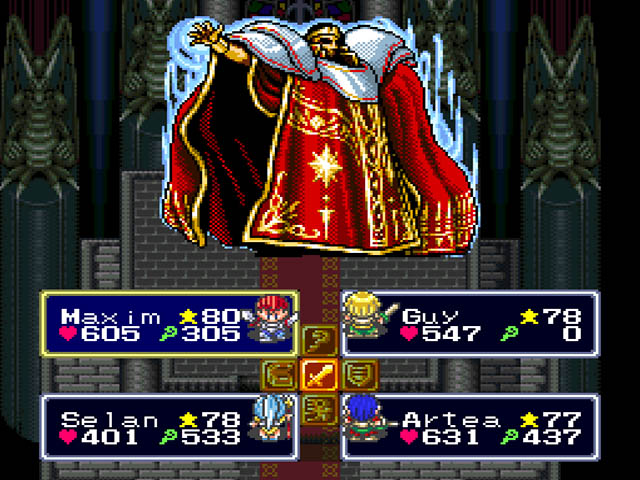
1. Lufia & the Fortress of Doom
Lufia often gets overlooked, it being a JRPG not called Final Fantasy, but it’s a fate that isn’t quite fair for the series. Lufia had many qualities that have inspired many RPG’s since, like its sometimes devilishly difficult puzzles and blending platforming and action RPG elements to its tradition turn based gameplay elements. Though, the most stand out moment of the original Lufia is the first 20 minutes.
You take the role of Maxim, hero of heroes and his friends, as they storm the floating castle of a group of super evil demon lords called the Sinstrals. After exploring the dark fortification, you come across the even group and challenge them in combat. You manage to slay them after a series of arduous battles, but two of your party, including the leader Maxim, don’t make it out of the castle before it crumbles and falls back to Earth. You eventually take the role of a descendant of Maxim for the rest of the game, retracing his footsteps in order to stop history from repeating itself.
Being able to play the game’s most significant historical moment is a great way to get players invested in the task of stopping it from happening again. Maxim and his friends was such a compelling way to open the game, that their story became the focus of the sequel.
What other video game prologues were memorable? Leave them in the comments, or tweet @CurseGamepedia with your picks.
Minecraft Update 1.62 Out Now for PS4 and PS3
Not one, but two new patches are now available to download for Minecraft on PlayStation 4 and 3. Minecraft update 1.62 and 1.61 were released to fix issues, and add support for the “Minecon Earth 2017 Skin Pack.” For more, check out the full patch notes.
Check out the full Minecraft update 1.62 and 1.61 patch notes below:
Minecraft update 1.62 patch notes
- Addressed an issue that prevented invited friends from joining.
Minecraft update 1.61 patch notes
- Added support for the Minecon Earth 2017 Skin Pack.
- Minor bug fixes and improvements.
The last major Minecraft update was update 1.57, which added a ton of custom game types. You can view all of them below:
- Added the “Custom” game type to the Battle Mini Game with a huge variety of new settings, including:
- Enable choosing the number of lives per round that each player gets.
- Now you can choose the number of rounds to play before the winner is selected.
- Enable forcing map size.
- A variety of different options to manage how players heal, and how quickly they get hungry.
- Added the No Armor item set to Custom Battle games, an item set designed to keep the combat fast-paced and exciting.
- Added the High Power item set to Custom Battle games, allowing you to play Battle with some of the most powerful items in Minecraft!
- Decayed item set to Custom Battle games; every item breaks after a few uses, so you’ll need to keep moving.
- Added the Food Central item set to Custom Battle games. Food is only found in the centre chests, and equipment only in the outer chests.
- Added the “Custom” game type to Tumble Mini Game with a huge variety of new settings, including:
- Enable choosing the number of lives per round that each player gets.
- Enable choosing the number of layers and controlling the size of the layers.
- Fireworks as a usable weapon in Custom Tumble games is now added to the game.
- Splash Potions of Levitation as a usable weapon in Custom Tumble games is now added to the game.
- Added Spectator Participation to Custom Tumble games
Minecraft update 1.62 is available now on PlayStation 4 and 3.
Doctor Minecraft
Or, how I learned to stop worrying and love the cube.
I’ve recently become addicted to Minecraft, like seemingly every small child I know. I’m surprised it didn’t happen sooner; I’ve played similar games – like Terraria and so on – and I always enjoyed playing with LEGO as a kid, but I just never managed to get hooked by Minecraft.
Maybe it was the terrifying number of crafting recipes that (until recently) you either had to memorise or Google; maybe it was my frustration at the less-than-ideal (to put it lightly) behaviour of the game’s creator; or maybe it was my lack of friends who wanted to hang out in a server with me. Whatever it was, I successfully avoided a Minecraft addition… until now.
Recently in Melbourne I visited ACMI, where one room boasts an impressive collection of films and videogames – and artefacts related to their creation. The room was overflowing with school children when I wandered through, and many of them were drawn to Minecraft. In fact, while I was watching, a group of students were busily modifying texture packs, of all things.
I understand now why so many children have been captured by this world: it seems to have something for everyone. It allows people to understand as much or as little of the system as they like, and still enjoy themselves within the space. Children who want to modify textures or create their own mods are welcomed, but those who want to explore, or fight, or create, or mine to bedrock are welcomed too.
This is epitomised by the group I play Minecraft with, each of whom have different approaches to play. Some enjoy action shooters, and find joy in playing Minecraft in survival mode, struggling through nights of killing (or avoiding) the various hostile creatures that roam the world. Others enjoy building new structures, so spend their time in creative mode, floating around and constructing impressive homes and monuments.
And just as Minecraft offers my friendship group an array of options, it offers them to me as well. It’s a space for me to go on (slightly scary) adventures with my friends, laughing with one another via voicechat, just as it’s a place for me to lose myself in methodical tasks while I’m the only one online. It’s a place to perfect my mining style, burrowing underground while watching television shows on my second monitor. It’s a complex fidget toy, giving me something to do with my hands and head that isn’t particularly strenuous. It’s a jigsaw puzzle, where the image I’m putting together is of my own creation.
Minecraft has become a sort of self-care for me. I often struggle to incorporate social interactions into my hectic schedule, but Minecraft has given me a way to spend time with people I care about inbetween commitments. Similarly, methodical and repetitive tasks are a coping mechanism for keeping my anxiety in check, and Minecraft offers a more interesting alternative to sitting with a bunch of grapes and pulling them, one-by-one, from their stems.
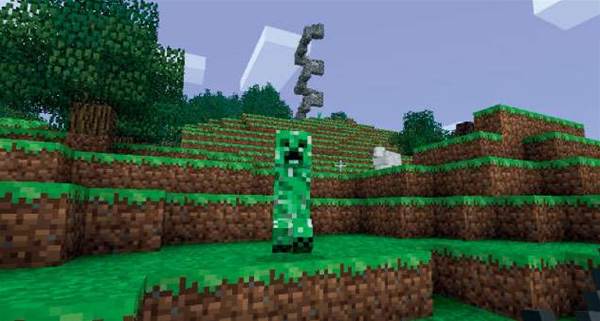
It’s also surprisingly accessible. It’s the little things: depending on the day, I might want challenging adventures or relaxing exploration, and the mode I choose can account for that. And as somebody who struggles with auditory processing, being able to adjust every part of the music and sound effects using separate sliders makes it so much easier to hear what I want or need to, without it being lost in a cacophony of other sounds. Minecraft may be an obsession for a lot of kids, but I can’t see why – it’s clever.
I understand Minecraft, and the people who play it, better now. The children playing this game have found a respite from their anxious minds, an adventure through which to socialise with their friends, and a platform for exercising their curiosity and practising all sorts of skills, and I’m honestly sad it took me this long to join the party.
Rocket League: Collector’s Edition Features Bonus DC Comics-Inspired Goods
For those that still haven’t picked up the game yet, Rocket League will see another retail release next month, with a Collector’s Edition that’s being distributed by Warner Bros. Interactive Entertainment. This is a pretty big deal, and with what’s just been announced in the package, fans may find some tremendous value in picking it up.
In a new blog post, the developers at Psyonix confirmed some special bonus goodies for the Collector’s Edition of the game when it releases on December 7th, and they’ll be worthwhile ones for DC Comics fans. That’s because the package features exclusive wheels based on the Flash. As you can see in the screenshots above and below, the wheels look distinctively like Flash logos. In addition, there will also be special Player Banners available, including ones featuring the DC Comics logo, as well as the Flash. (And you can name your vehicle “B. Allen” if you feel up to it.)

The Collector’s Edition of the game will also come with plenty of great downloadable content on the disc as well, including DLC like Supersonic Fury, Revenge of the Battle-Cars and Chaos Run, as well as premium DLC battle-cars like the Aftershock, Marauder, Esper and Masamune. You’ll also find a cool limited Art Print created by Psyonix concept artist Jay Zhang.
Now for those that don’t wish to invest in a physical copy of the game – you probably already own it – there’s no need to fret. Psyonix has made it clear that owners will be able to purchase The Flash and DC Comics content in 2018, with a “future opportunity.” A date wasn’t given yet, but it shouldn’t be too far off. So, yes, you’ll get you crack at these goods as well, as they won’t be limited to this retail release.
The retail version of the game is set to sell for $29.99, which isn’t too bad at all considering what’s all included. It’s just for Xbox One and PlayStation 4, though – the Nintendo Switch version, which launches this Tuesday, will already have its fair share of exclusive content, including the Mario, Luigi and Metroid cars. There’s a possibility it could get the Flash goodies down the line, though. We’ll see what Psyonix has planned.
Rocket League is available now for Xbox One, PlayStation 4 and PC, and releases this Tuesday for Nintendo Switch.
Rocket League: Collector’s Edition Features Bonus DC Comics-Inspired Goods
Metroid Prime 4 Being Co-Developed Alongside Bandai Namco Games
Nintendo blew our collective minds earlier this summer when it finally announced the return of the Metroid Prime franchise, with a fourth installment currently being developed for release on the Nintendo Switch. Today, though, we learned who the development team behind the game just might be.
According to this Reddit report, the team behind the forthcoming Prime revival could be none other than Bandai Namco Games. The team appears to be working alongside long-time Metroid series producer Kensuke Tanabe with putting the game together. What’s more, we could be seeing first footage of the project sooner rather than later.
“Metroid Prime 4 should have something revealed with some in-game footage early next year from what I’ve heard,” the source noted. “I’m hearing that Direct in January particularly. Bandai Namco is developing the game for Nintendo.” That said, they did note they didn’t know specifically which studio at Bandai Namco was working on the game.
Now, take it with a grain of salt. Bandai Namco hasn’t said anything officially about the game (nor Nintendo), and it seems like a quirky choice for such a storied franchise. However, we’ve seen Bandai Namco work its magic on Nintendo franchise before. The developer worked on StarFox Assault on the GameCube several years ago, and also had a hand in development creating Super Smash Bros. for the Wii U and Nintendo 3DS – and Pac-Man’s in there as proof.
Some people have been wondering, “Well, why not Retro Studios?” A good question. But with the rumor that a new Donkey Kong game could be coming to Switch, they may be busy working on that.
If – and it’s a big if – this rumor does end up coming true, and we see first footage of Metroid early next year, Nintendo could be, ahem, Prime-ing it for a big 2018 release on the Switch. It’d make an ideal holiday seller, if it could be done in enough time. For now, though, we’ll just have to see what the company has planned, as it hasn’t announced too much of its line-up for next year yet, save for new Kirby, Yoshi and Pokemon games.
Metroid Prime 4 Being Co-Developed Alongside Bandai Namco Games
This Cancelled Justice League Game Could’ve Been A Game-Changer
I
t’s always funny to hear about what might’ve been with cancelled comic book game projects, like the moody Batman: Gotham By Gaslight game or the first-person Avengers video game that never came to be. But now, the team at Unseen64 have stumbled across one of the biggest projects to date that never got to see a release – a Justice League game that would’ve coincided with a film of the same name.
The 3D beat-em-up, under the project name Justice League Arcade, was in development for some time over at Double Helix Games – which also produced games like Killer Instinct (the first season) for the Xbox One and Capcom’s reboot of Strider for various consoles. It had a great concept in mind, enabling players to take control of different characters within the League, including Superman, Batman and Wonder Woman, as they took on adversaries using a number of special techniques. For instance, Batman utilizing his items alongside his fisticuffs, and Wonder Woman using her Lasso of Truth to fling an enemy around, while also using throw moves and attacks.
The game, which was set for release on Xbox 360, PlayStation 3 and Wii, was meant to be released alongside a film titled Justice League Mortal, which was in the works back in 2008 under the direction of George Miller – yes, the same man that brought us the incredible Mad Max: Fury Road.
Several complications came up between the film and the game, however. While Double Helix had invested a great deal of time into its fighting engine – similar in nature to Shiny’s The Matrix: Path of Neo – Warner Bros. kept delaying the project while it was trying to find an ideal location to shoot Mortal. The film was already reportedly set to have a $300 million budget, the largest in film history at the time, and it was looking for some place to give it some tax breaks.
Alas, they couldn’t find a deal to get the job done, and as a result, the film was scuttled in 2009 – and the game followed soon thereafter, though Double Helix was pushing to give it a separate release, feeling that it could attract a strong DC Comics audience.
But don’t be too sad for its loss. Double Helix was able to recover a great deal of its assets for release in a new game, Green Lantern: Rise of the Manhunters, which came out two years later for Xbox 360, PlayStation 3 and Nintendo Wii – tied in with the Lantern movie of the same name. The game fared pretty well, whereas the film, well, you know.
And now we’re seeing Justice League rise again, with a new film directed by Zack Snyder, set for release this Friday. And we’re getting good in-game content with it as well, as Injustice 2 will see some premium skins based on characters from the film.
Still, sigh. We can’t help but think how awesome a George Miller Justice League film would’ve been, as well as how Double Helix’s game would’ve ended up in its original form. You can see the gameplay in action in the video above, and dare to dream.
Justice League releases this Friday.
This Cancelled Justice League Game Could’ve Been A Game-Changer
Gal Gadot reportedly plays hardball, won’t sign on for ‘Wonder Woman’ again if Brett Ratner is still on board: NY Post
The much anticipated sequel to “Wonder Woman” may not star Gal Gadot, if filmmaker Brett Ratner remains on staff, according to a report from the New York Post.
The publication’s Page Six, citing an unnamed source close to Gadot, said the actress will not continue with the franchise so long as Ratner can profit. Ratner’s production company RatPac-Dune Entertainment helped to produce “Wonder Woman,” as part of a co-financial deal with Warner Bros.
Separately, The Los Angeles Times reported that the Burbank-based studio will not renew this deal with Ratner beyond 2018.
The film maker has been accused of sexual misconduct by at least six women, including actresses Olivia Munn and Ellen Page.
“Wonder Woman” has been a critical and box office success, garnering more than $821 million worldwide. A delay or recasting could imperil the momentum the movie created earlier this year, which sets the stage for “Justice League’s” debut on Friday.
“She’s tough and stands by her principles,” the source told Page Six. “She also knows the best way to hit people like Brett Ratner is in the wallet. She also knows that Warner Bros. has to side with her on this issue as it develops. They can’t have a movie rooted in women’s empowerment being part-financed by a man accused of sexual misconduct against women.”
Representatives for Warner Brothers did not immediately respond to CNBC’s request for comment.
‘Justice League’ aims to break through $1 billion after a rocky year for DC movies
Warner Bros. has a lot riding on the release of “Justice League” next weekend following a rocky start for several franchises and a flurry of reports that’s left fans uncertain about future films.
Despite all this, analysts expect the superhero team-up movie to be a blockbuster. But better reviews, and a warmer response from audiences than some prior DC cinematic universe movies have garnered, could help vault “Justice League” over a major milestone.
“The difference between ‘love’ and ‘like'” could mean hitting $1 billion worldwide at the box office — or not, said Paul Dergarabedian, senior media analyst at comScore.
While last year’s “Batman V Superman: Dawn of Justice” and “Suicide Squad” were both commercial successes worldwide, lukewarm reviews weighed on U.S. earnings, and neither managed to surpass $1 billion.
This summer’s “Wonder Woman,” DC’s first critical hit, broke records but also fell short of the high water-mark.
“Justice League” picks up where “Batman v Superman” left off. Following the death of Superman, Batman and Wonder Woman recruit a team of heroes to fight an impending threat to the earth.
For DC, “Justice League” is a crucial piece of the puzzle, because the film is expected to establish several new characters who will star in spin-offs, including the Flash, Aquaman and Cyborg. It’s also a test of DC’s pivot from the grim and gritty tone of its first three films, to the hopeful, more light-hearted style of “Wonder Woman.”
Over the past month, tweets about the “Justice League” trailers have been 35 percent positive and just 4 percent negative, indicating that previews are generating the right kind of interest, according to marketing technology firm Amobee.
‘Fairly irresistible’
The release caps a choppy year, during which Warner retooled its DC comics strategy, modeled after the path Disney plotted for its multi-billion dollar Marvel superheroes series.
Fan websites breathlessly chronicled a steady drip of rumored cancellations, revised release dates and mixed messages from stars and filmmakers about which films would link up. Just this week, leading man Ben Affleck seemed to cast doubt about how long he’ll play Batman.
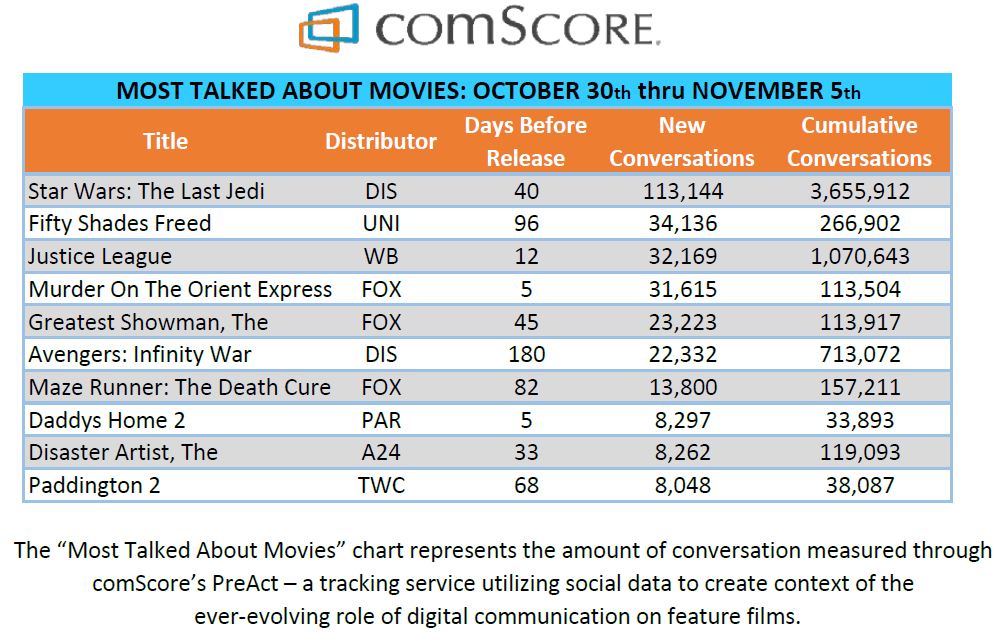
While there’s been much hand-wringing in the fan community over these reports, the typical movie-goer is more likely to take “Justice League” on its own merits, said Dergarabedian.
“The clarity of vision hasn’t been consistent, and I think that can be confusing to true fans,” he told CNBC. “But an average viewer says you’ve got Aquaman and Wonder Woman and all these great characters in one movie, and that seems fairly irresistible.”
The film is currently expected to earn $110-$120 million during its North American opening.
Those estimates should be closer to $135 million, argued Jeff Bock, senior box office analyst at Exhibitor Relations Co. “Justice League” dovetails with Thanksgiving weekend, and faces little competition until “Star Wars Episode VIII: The Last Jedi” premiers in mid-December, he noteed.
Bock also anticipated little blowback from Affleck’s links to Hollywood’s sexual harassment scandal. “Justice League” is somewhat inoculated because it will draw fans of the individual characters, as well as movie-goers eager to see Wonder Woman in action again, he said.
“The great thing for Warner Bros. is there’s something for everyone there, and that will help expand the brand,” he told CNBC.
Yet if “Justice League” wows audiences, there’s no upcoming DC movie to capture the goodwill dividend, at least not immediately. The next release is “Aquaman,” which Warner pushed back to December 2018.
In contrast, Marvel Studios will follow up this month’s hit “Thor: Ragnarok” with “Black Panther” in February, “Avengers: Infinity War” in May and “Ant-Man and The Wasp” in July.
That matters in the context of a tough time for Hollywood, as superhero movies were one of the only consistent winners in 2017.
Nevertheless, Jonathan Cohen, principal brand analyst at Amobee, thinks Warner Bros. is doing the right thing by stepping back and focusing on the quality of each movie, rather than trying to match the Marvel playbook at all costs.
“Once their house style is more codified, those connective flourishes will likely start organically reappearing in their superhero films,” he said.
‘Justice League’ aims to break through $1 billion after a rocky year for DC movies










